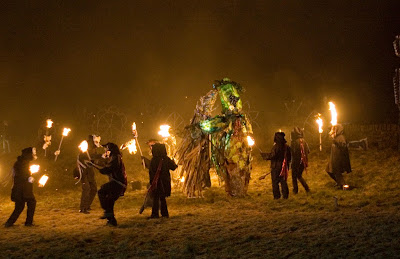Samhain & Goddess Tlachtga
Written by Ben Kesp
The orange flames cast light onto the dark cold nights of winter. The gods of old are waiting to be appeased, signalling the end of one year in preparation for the next.
In ancient Ireland, fires lit up the darkened skies offering protection and cleansing in rituals to the gods and to the spirits of nature. As Samhain approaches or better known today as Halloween, the Fire Festivals continue with variations to the original practices by people with different beliefs and cultures.
The orange flames cast light onto the dark cold nights of winter. The gods of old are waiting to be appeased, signalling the end of one year in preparation for the next.
In ancient Ireland, fires lit up the darkened skies offering protection and cleansing in rituals to the gods and to the spirits of nature. As Samhain approaches or better known today as Halloween, the Fire Festivals continue with variations to the original practices by people with different beliefs and cultures.
Pronounced as “Sow – in”, it is an ancient festival that has become buried under modern Halloween or Hallows Eve. Samhain is the time when the veil between the world of the spiritual and living merge. It marks the end of the harvest season and the beginning of winter. It is celebrated from sunset on 31 October. Special bonfires were lit for protection and cleansing used in various rituals. Samhain is a time when the spirits (or the Aos Sí) could easily cross into the world of the living. Most scholars refer to the Aos Sí as remnants of the pagan gods (Tuatha Dé Danann) and nature spirits. In Irish Myth, while the Tuatha Dé Danann were building their armies to battle the Fomorians, The Great Dagda (Father of the Gods), met a beautiful woman and slept with her on the 31st of October, the eve before the great battle. The woman was Morrígan who represented the sovereignty of Ireland and also makes up the Triple Irish War Goddess along with her sisters Badb and Macha. Dagda must sleep with the goddess Morrígan each Samhain’s night to ensure the land of Ireland remains fertile for the following year.
Suggested origins for the lighting of fires for the festival of Samhain begin in Ireland on the Hill of the Ward or Tlachtga named after the powerful druidess. It was on this hill that most eminent druids assembled and the first fires were lit, signalling to the rest of the country the ritual had begun. The nearest fire to be lit to Tlachtga was at Tara, the ancient site of the high kings.
In 2014, University College Dublin began excavations on the site that contain earthen works that are most impressive from the air, that has lead to a greater understanding of the site including the discovery of an infant buried some 3,000 years ago. On a cold and wet November night in 2014, I had the pleasure of being on this ancient ground to witness the annual ritual to the goddess Tlachtga organised by the local drove of druids. Only the fires that burned lit up the night sky. According to myth it was on the hill over two thousands years earlier that saw the birth of Samhain, a pagan Irish festival.
In Irish Mythology, Tlachtga was the daughter of Mud Ruith a powerful druid and sun god. He is a figure of immense power and could grow to a great size and his breath could turn people to stone. According to myth and the tales that are retold, Tlachtga travelled with her father Mug Ruith to Italy to study under the powerful wizard called Simon Magnus. They constructed a flying machine called the “Roth Rámach”.
In Irish Mythology, the number three is very prominent in stories and symbols which is evident from other posts I have written. While in Italy, Tlachtga was raped by the three sons of Simon Magnus. Following she journeyed with her father to Ireland using the Roth Rámach. Tlachtga dies giving birth to three sons and her followers buried her on the spot, raising a hill over her body. Fires were lit in her honour and especially during the middle ages the site had been prominent for festivals. The major ceremony held at Tlachtga each year is the lighting of the winter fires each Samhain to honour the goddess.
Images: Trip Advisor, Meath Chronicle and Tlachtga WordPress Blog.





Comments
Post a Comment